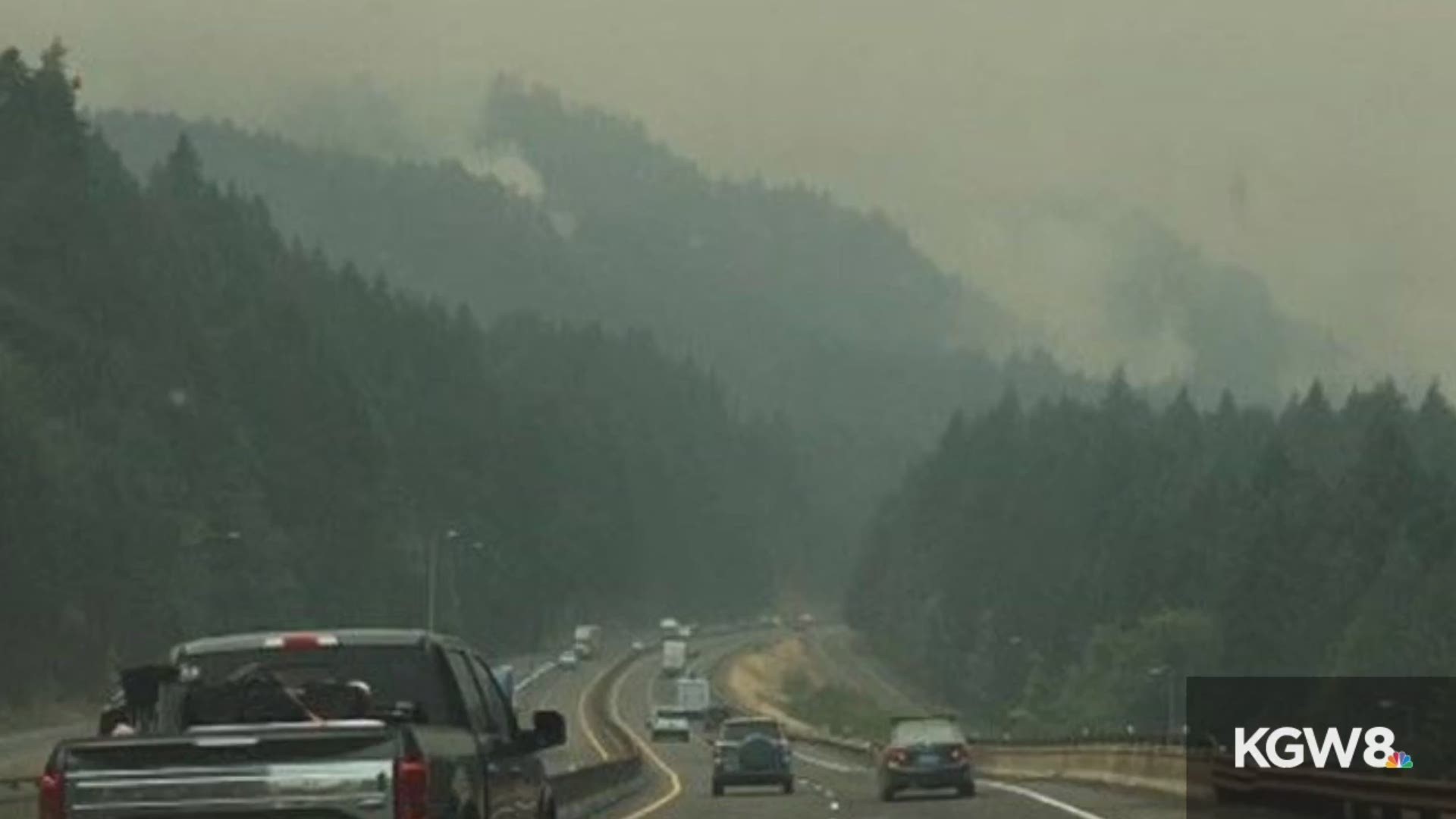It’s time to head back to the Columbia River Gorge.
For the first time since the 2017 Eagle Creek Fire, seven of Oregon’s most popular trails reopened on Friday.
The moment was made possible by an army of volunteers that worked to stabilize trails hammered by flames and landslides.
The list of hikes that reopened include some of Oregon’s most iconic, including Angel's Rest and Wahkeena Falls, Horsetail Falls and Larch Mountain. The full length of the Historic Columbia River Highway is now open as well.
"This reopening includes a lot of the really good stuff," Forest Service spokeswoman Rachel Pawlitz said. “This is a big day.”
The Eagle Creek Fire roared to life in September of 2017 when a teenager tossed a firecracker into the woods of Eagle Creek Trail.
The blaze spread quickly, briefly trapping 40 hikers — including nine Salem teenagers — before roaring across 50,000 acres in a calamity that shut down Interstate 84, torpedoed the local economy and cost $40 million.
But volunteers returned to help repair trails as soon as the flames subsided, and trails impacted by the blaze have been gradually reopening.
The list of trails that opened Friday includes:
• Angel’s Rest #415
• Devils Rest #420C
• Return Trail #442
• Wahkeena Trail #420
• Vista Point Trail #419
• Larch Mountain Trail #441
• Horsetail Falls Trail #438 to Ponytail Falls
Many Forest Service and state park trails and sites remain closed with no timeline for reopening. That includes famous hikes such as Eagle Creek Trail, Elowah Falls and Wahclella Falls.
The off-trail hike up Oneonta Gorge also remains closed.
“It’s thrilling to be able to reconnect visitors with these much loved waterfalls and trails, which were hard hit by the fire," said Lynn Burditt, area manager for the Columbia River Gorge National Scenic Area.
"Many dedicated people from throughout the region provided sweat equity or donations to our partners, who helped us bring about this day.”
Those who return to the Gorge will find many of their favorite places changed, but not lost, Pawlitz said.
Multnomah-Wahkeena loop reopens
The most popular hike to reopen was the iconic 6-mile loop between Multnomah-Wahkeena falls.
Beginning at Oregon’s tallest cascade — 620-foot Multnomah — the route passes a total of five waterfalls on a tour that should also showcase forest impacted by the fire.
The loop includes Weisendanger Falls (55 feet), Ecola Falls (55 feet) before diving into the beautiful canyon of Wahkeena Creek and passing Fairy Falls (20 feet) and finally multi-tiered Wahkeena Falls (242 feet).
A post-hike meal is always a good bet at Multnomah Falls Lodge.
Horsetail Falls Trail #438 to Ponytail Falls
This popular hike begins at Horsetail Falls along the historic highway before heading into the forest and wrapping behind pretty Ponytail Falls.
Due to fire damage, the trail ends at Ponytail, meaning this route is only 0.8 miles total.
“The trail is in awful shape beyond Ponytail, so I don’t think there will be any confusion about what’s open and what’s not,” Pawlitz said.
Angel’s Rest
The rocky outcropping of Angel's Rest towers over its surroundings, one of the most recognizable cliffs west of Multnomah Falls.
A popular 4.4-mile, up-and-back hike with more than 1,800 feet of elevation gain, the Angel's Rest Trail leads to some of the best views in the Gorge but makes you work for it.
Pictures from the top show that the forest has been heavily impacted by the fire, but that probably just means more good views.
Larch Mountain
There are 6 miles of hiking trails around the 4,055 foot volcano that rises above the Gorge.
The gate leading to the upper trailheads may be closed by snow, but the trails remain accessible from lower trailheads.
Who helped make this happen?
Pacific Crest Trail Association and Trailkeepers of Oregon organized volunteer trail crews to repair and stabilize area trails, while Friends of the Columbia Gorge assisted with invasive species removal and visitor information, according to a news release.
National Forest Foundation and Oregon Kitchen Table provided financial support for trail repair, based on donations from the public. Funds donated at Multnomah Falls Lodge were also used to help underwrite costs of trail work.
“People care deeply about the Columbia Gorge. We received donations from people in 28 states and with that support we improved over 60 miles of hiking trails this year,” said Patrick Shannon with the National Forest Foundation.

